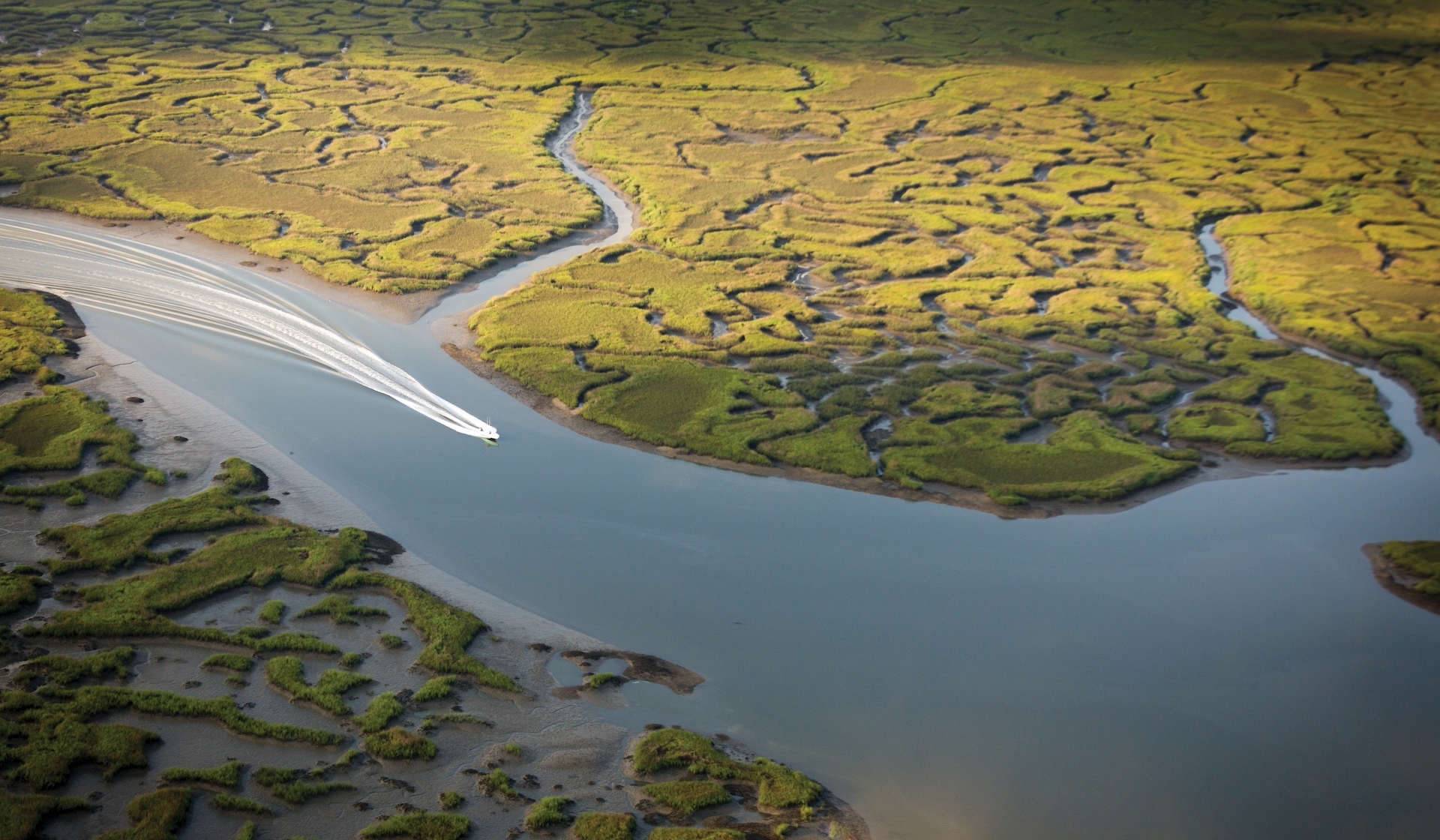The Art of Fly Fishing
Exploring precision and pleasure in the centuries-old sport of fly fishing
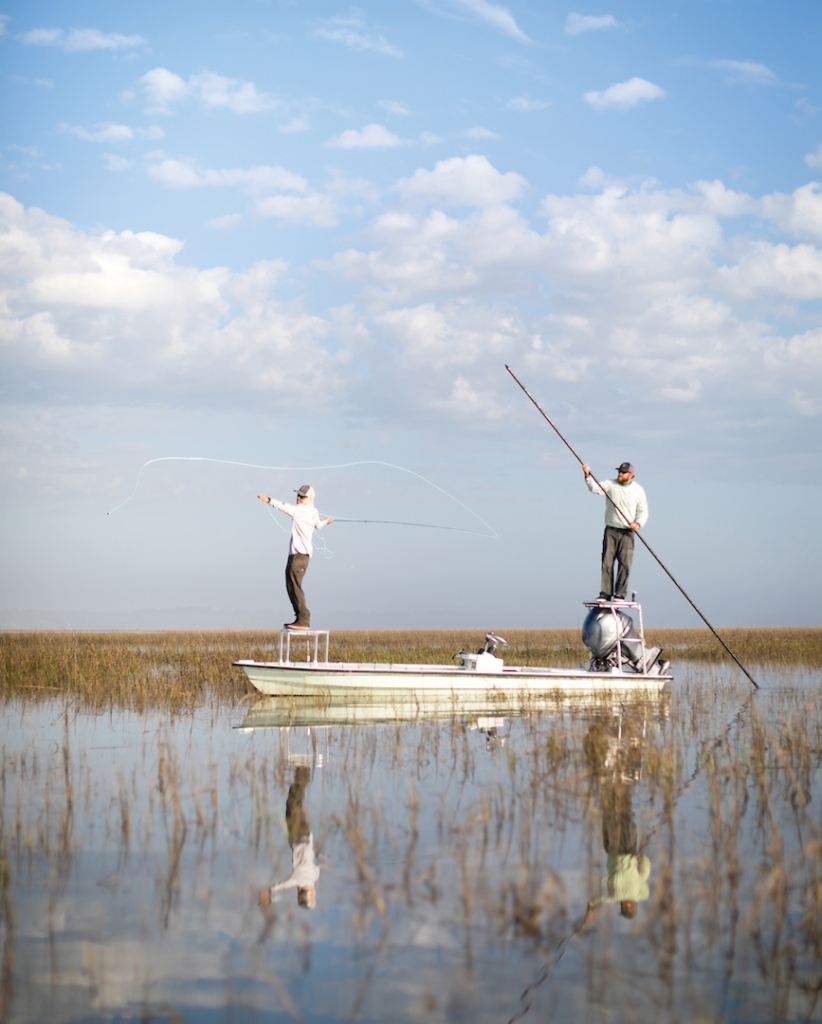
It’s a cool autumn morning. A cold front blown in from the north sends a gentle breeze rippling across the surface of the riverbed. Save for the rustling of branches and the slow trickle of the stream, the world is still and silent. From above, soft daylight filters through the treeline as a school of trout makes their way down the river below. You couldn’t ask for a better day for fishing, and wading through the river in tall rubber boots, you feel a sudden sense of calm wash over you. You pull the rod back and cast a line, in a fluid motion that feels almost like second nature. With a deft flick of the wrist, the fly dances through the air before settling softly on the water’s surface, barely causing a ripple. As you reel in slowly, the line quickly tenses—a sudden tug. The excitement begins to flood in and your heart races, not just from the promise of the fish’s size, but the connection between the water and the subtle mastery of an age-long technique. In this moment, everything else fades away. It is more than just the catch, it’s a dance of patience and skill, where every cast draws you closer to the tranquil harmony of the flowing waters. This is fly fishing in its truest form.
Yet, fly fishing wasn’t always a pastime of pleasure. Originally, it served as a means of survival. In a bygone era, it was a primary method of catching food. But as the centuries turned, fly fishing slowly evolved into the challenging yet serene leisure sport we know today. Fly fishing is often considered an art form and is far more challenging than other types of conventional fishing, namely live bait or artificial bait fishing using a spinning rod or bait caster reel. Why is this? In fly fishing, you use energy generated from the rod, paired with the weight of the line, to create momentum in carrying the fly out into the water. Unlike other fishing methods, a fly fisherman can’t simply lean back in his chair and wait for fish to bite, he must remain alert and engaged to make a catch.
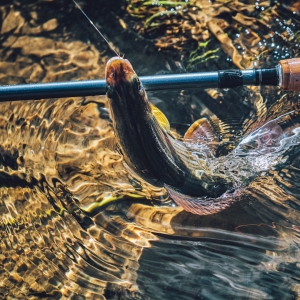
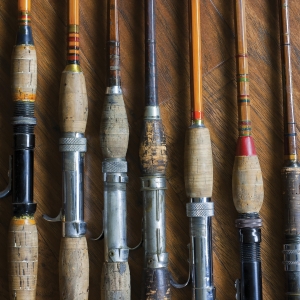 Fly fishing is most often practiced in streams, rivers and moving bodies of water, though one can certainly be successful in still water. The key differences in fishing types lie in the rod choice, as it’s often lighter and thinner compared to a typical spinning rod. While a classic spinning rod can catch a variety of fish, fly fishing rods can differ in number and weight depending on the fish you’re aiming to catch. Another main difference is that fly fishing requires artificial lures that mimic local aquatic or terrestrial bugs and crustaceans that the fish feed on. Meanwhile, spin or bait fishing almost exclusively utilizes live or dead bait. The weight of the lines can also vary. In fly fishing, the lines are weighted heavier and the rods are lighter, while in spin or bait fishing, the rod is heavier and the line is lighter. Fly fishing is a practiced skill, meant to be treated more as a sport with a catch-and-release mentality than spin fishing, where people catch more fish, typically to eat.
Fly fishing is most often practiced in streams, rivers and moving bodies of water, though one can certainly be successful in still water. The key differences in fishing types lie in the rod choice, as it’s often lighter and thinner compared to a typical spinning rod. While a classic spinning rod can catch a variety of fish, fly fishing rods can differ in number and weight depending on the fish you’re aiming to catch. Another main difference is that fly fishing requires artificial lures that mimic local aquatic or terrestrial bugs and crustaceans that the fish feed on. Meanwhile, spin or bait fishing almost exclusively utilizes live or dead bait. The weight of the lines can also vary. In fly fishing, the lines are weighted heavier and the rods are lighter, while in spin or bait fishing, the rod is heavier and the line is lighter. Fly fishing is a practiced skill, meant to be treated more as a sport with a catch-and-release mentality than spin fishing, where people catch more fish, typically to eat.
The History of Fly Fishing
Some historians suggest fly fishing began in 12th-century Japan when it was known as Ayu fishing. Unlike today’s sport, Ayu fishing consisted of drifting an artificial fly down rushing mountain streams, no casting technique required. Other records suggest fly fishing dates back to ancient Egypt and Rome, around 100-200 AD, when authors Claudius Aelianus and Marcus Valerius Martialis wrote about Macedonian fishing techniques where anglers used a rod with red wool and feathers attached. Despite these claims, fly fishing as a sport was popularized in England in the 15th century. Historical mentions of fly fishing can be found in Englishman Izaak Walton’s “The Compleat Angler,” a fictional story and guide to the art of angling as it pertains to the habits of fish, methods of catching fish and proper equipment. In the book, Walton states, “As no man is born an artist, so no man is born an angler.” Walton helped set the precedent for fly fishing as both a learned skill and as a beautiful art form.
A traditional method known as “Tenkara” dates back 400 years and is a well-known cousin of modern fly fishing. Originating in the mountain-dwelling communities of the Tohoku region of Japan, “Tenkara” translates to “fly fishing.” Since these early days, techniques, lines, flies and rods have become far more sophisticated, reflecting the evolution of fly fishing into a refined and advanced practice.
Tradition Runs Deep
Fly fishing practices differ around the world, no matter the salinity, temperature or geographic location of the body of water itself. Rivers and ponds vary from bays and open oceans and each require different rod weights and types of flies depending on the fish. Depending on which part of the world you’re in, one of the most widely shared values is catch and release. Local ordinances differ from region to region, but for the most part, catch and release is critical to keep fish populations intact for conservation purposes and to prevent overfishing.
Fly Fishing in Georgia
While there are spectacular fly fishing destinations around the world, from New Zealand to Argentina, Chile and even Mexico, there are several ideal spots in the United States, including Alaska, Montana, Wyoming, California and Georgia.
While fly fishing is most often associated with pursuing trout in the flowing rivers of Wyoming and Montana, Georgia has a broad offering of fish to pursue in both freshwater and saltwater. Local fly shop owner, Jared DiVincent of On The Fly Outfitters, has been serving the fly fishing community since 2017. “Although Georgia has some terrific freshwater fly fishing opportunities, saltwater fly fishing is our focus, being located on the marshes of Georgia’s Golden Isles. While most visitors to the area picture the artful (and intimidating) casts to trout seen in the popular film, ‘A River Runs Through It,’ our staff’s mission is to educate our customers by showing them that fly fishing is not as difficult as it looks.”
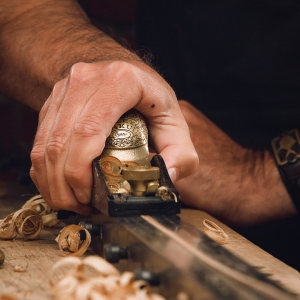
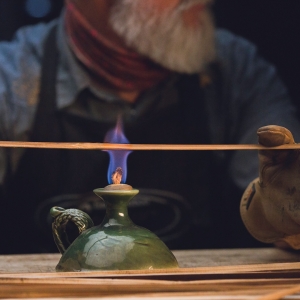
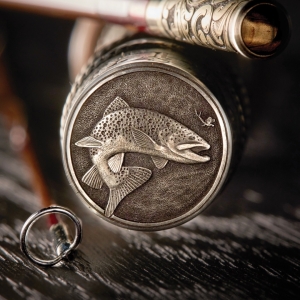
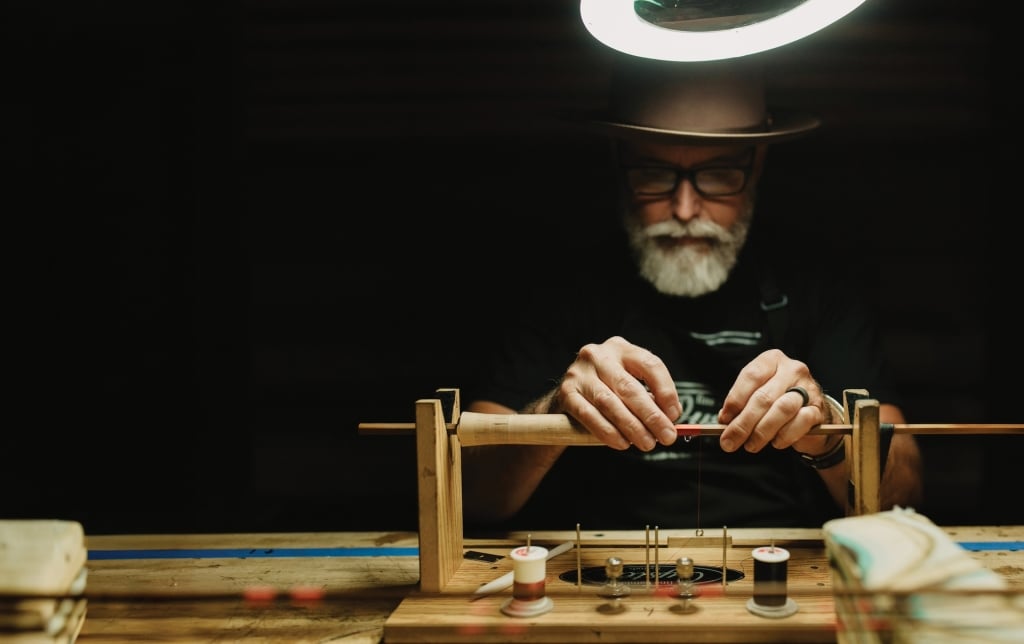
Bill Oyster meticulously crafting a bamboo rod.
Fly Fishing at Sea Island
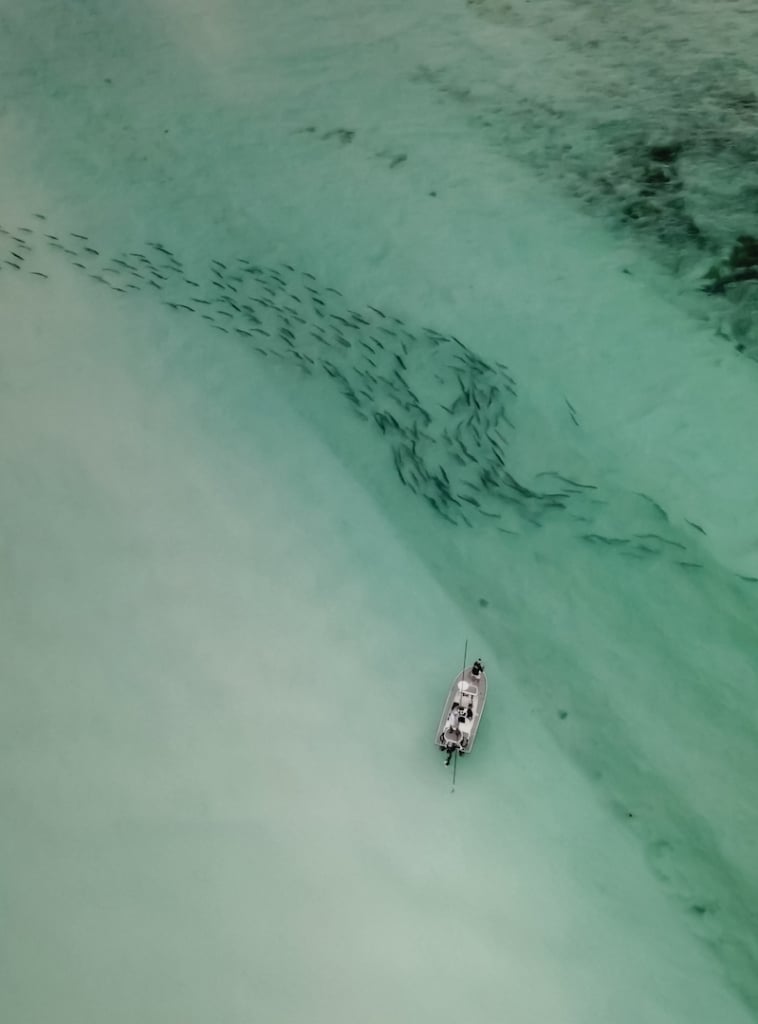
Aerial view of an angler targeting saltwater fish seen beneath the surface.
Sea Island offers various types of fly fishing throughout each season with organized excursions for all age levels and groups. Captain Reid Williams utilizes the incredible location of Sea Island on the Georgia Coast to his advantage, taking groups through the picturesque marshes in search of speckled trout, redfish, flounder and whiting, organizing cruises along the coast during the months of April, May and June.
“There are large tidal fluctuations where we are located in Georgia, which means more fishing opportunities,” Captain Williams explains. “You can go fly fishing year-round. For example, October through April is when we specifically organize low-water fishing and go out on the flats boat in the creeks two hours before low tide.”
This is because fish push into the grasses of the creeks and marshlands in search of food, making it easier for anglers to catch fish. When it comes to flies, redfish in particular eat shrimp at all stages of their lives.
“We choose a fly to mimic what the fish eat,” Williams says. “Every angler has their preference, but with redfish, we want to use something that will mimic shrimp or small bait fish patterns. If there are three of us on the boat, chances are we will be using three different flies, whether it be a shrimp, mud minnow or crab pattern fly.”
Skill sets and techniques also vary between bodies of water. Captain Williams says that tarpon fishing has increased in popularity among guests, likely because it offers more of a challenge. However, because this class of fish ranges from 65 to 100 pounds, it requires a higher skill set and more experience. With this in mind, he consults with the anglers frequently weeks before they arrive in preparation for their Sea Island fishing excursion. With a range of targets and techniques, fly fishing is accessible to all skill levels.
Innovation and Evolution of Fly Fishing
Over the centuries, fly fishing has become far more advanced, with innovative materials like synthetic graphite and fiberglass for the rods, specialized casting techniques, the advancement in fly line materials and more intricate fly-tying techniques. While flies used to consist of chunks of fur or feathers tied to hooks, today, fly-tying has become somewhat of an art form. These new materials and techniques have allowed flies to become far more accurate in matching the bait they’re meant to replicate. For example, today’s designs create lifelike movements and imitations of creatures such as insects, baitfish and shrimp. As American writer and renowned fly fisher Theodore Gordon, who fished in the Catskills region of New York, once said, “The great charm of fly fishing is that we are always learning.” And for avid fly fisherman across the world, that couldn’t ring truer. Thanks to recent advancements in fly fishing equipment, anglers have access to lighter, more durable gear that allows for more precision and greater success.
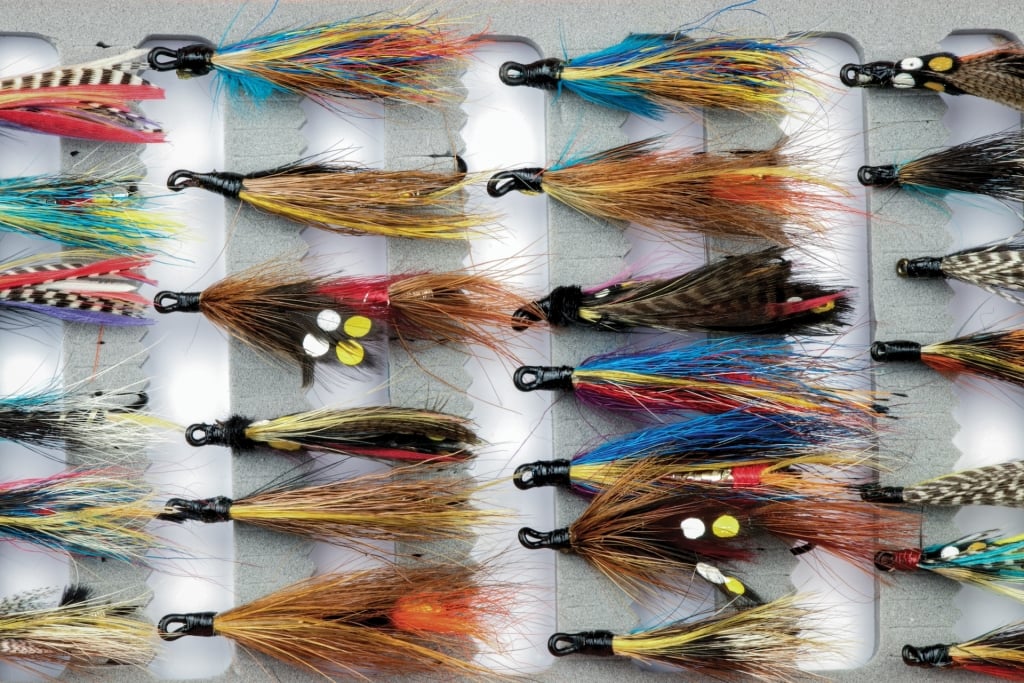 Bill Oyster, of Oyster Bamboo, a brick-and-mortar retailer in Blue Ridge, Georgia that sells some of the world’s best bamboo fly fishing rods, explains that fly fishing in Georgia is unique because it’s a year-round activity. Oyster Bamboo crafts the rods by hand, hosts private classes to teach customers how to build their own bamboo fly rods and is the only retailer in the world that solely is dedicated to making bamboo fly rods. The rods are engraved in-house by Oyster, also a master engraver, and can cost thousands of dollars. Oyster Bamboo continues to connect those interested to the traditional method of building bamboo fly rods and is beloved by people around the globe including former president Jimmy Carter, who favored Oyster Bamboo’s intricate rods.
Bill Oyster, of Oyster Bamboo, a brick-and-mortar retailer in Blue Ridge, Georgia that sells some of the world’s best bamboo fly fishing rods, explains that fly fishing in Georgia is unique because it’s a year-round activity. Oyster Bamboo crafts the rods by hand, hosts private classes to teach customers how to build their own bamboo fly rods and is the only retailer in the world that solely is dedicated to making bamboo fly rods. The rods are engraved in-house by Oyster, also a master engraver, and can cost thousands of dollars. Oyster Bamboo continues to connect those interested to the traditional method of building bamboo fly rods and is beloved by people around the globe including former president Jimmy Carter, who favored Oyster Bamboo’s intricate rods.
“We have 12 months of fishery a year, as well as many different species, warm-water species like large-mouth bass, striped bass and shoal bass,” Oyster says. “Then we have trout in the mountains, and on the coast we have redfish, tarpon and sea trout. There are plenty of fishing opportunities. There’s a lot of water in Georgia, and it’s much more varied than most other places in the country.”
Above all, fly fishing is a sport that blends skill, patience and a deep connection with nature. More than just a pastime, it’s a harmonious blend of art, science and nature, providing both a mental escape and a connection to the natural world.




